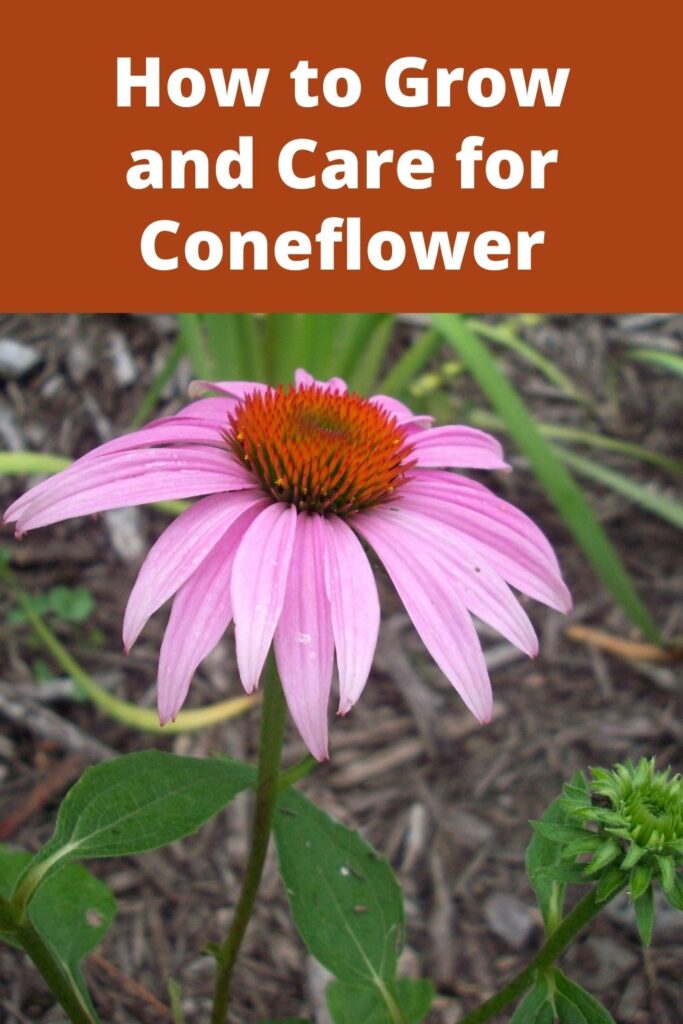Coneflowers are quintessential prairie plants. Native to eastern North America, they are hardy, drought-tolerant, long-blooming, and cultivated in an ever-widening range of colors. It’s hard to find a garden without at least one variety of the bloom. Best planted in early spring, coneflowers will germinate in about three to four weeks and produce leaves in three months but can take up to two years to actually produce blooms.
Purple coneflower is by far the most popular variety of coneflower. It has a fibrous root system, rather than the long taproot and woody crown found in other native species, making it more adaptable to garden conditions, and more forgiving of dividing and transplanting.
Coneflower’s daisy-like booms are actually made up of several small flowers, with petals that are sterile to lure insects toward the many fertile flowers in the central disk or cone. These flowers are rich in nectar and very popular with both bees and butterflies. Hummingbirds also enjoy coneflowers, and birds like finches eat the seeds.
How to Grow Coneflower
Coneflower plants are heat- and drought-resistant, which makes them easy to grow even for beginners. “Coneflowers do best in full sun, and bloom within roughly 60-90 days,” says Sears. “Most coneflowers will do best in USDA zones three to nine.” Just make sure you plant them somewhere they’ll see plenty of light. “Coneflowers perform best in full sun (at least six hours per day) and loose, well-drained soil, but will also tolerate heavy clay and even shallow, rocky soils with aplomb,” says Quindoy. “These highly-adaptable plants are also drought-tolerant once established.”
How to Plant Coneflowers
If you want to plant these perennials in your own garden, Sears advises waiting until the last frost has passed and then sowing coneflower seeds in open, well-exposed ground that is covered with a quarter-inch of soil. For earlier blooms, you can even start them indoors about six- to eight- weeks before the last frost of the season,” she says. “Once the plants reach two inches in height, they can then be thinned or transplanted outside. If you’re planning on growing these colorful flowers in pots on your deck or patio, Sears says you’ll need to make sure they have plenty of room. If you’re planting in containers, Coneflowers do best in containers over 24 inches in size. You can also skip the seeds and purchase more mature plants from your local nursery.
How to Care for Coneflowers
To get the best results from your coneflowers, Christina Matthews, urban flower farmer-florist and owner of The Flower Lady, says you should add a bit of fertilizer each spring. “I like to ‘top dress’ the soil around the plant with [a] good two inches of compost,” she says. “I find that in my gardens the compost is all they need in order for the plant to provide me with an endless amount of summer blooms.” However, if composting isn’t your speed, Matthews says you can use standard fertilizer as long as you test your soil first. “Your local county extension agency is a great place to start this process and your results often come with an array of information that is specific to the exact plants you want to grow in your space.”
Diseases and Pests
One problem worth noting in Echinacea is “aster yellows,” a virus-like disease caused by a phytoplasma. Symptoms are deformed flowers, sometimes with weird tufts in the cones, and yellow leaves with green veins. The organism is spread by sap-sucking insects like leafhoppers. There’s no cure, so once you notice a plant is infected, dig it up immediately and throw it away. They can also be bothered by leaf miners, powdery mildew, bacterial spots, gray mold, vine weevils, and Japanese beetles.















